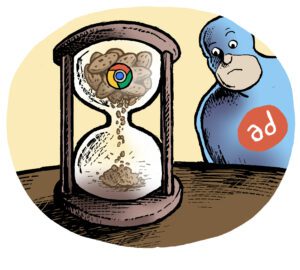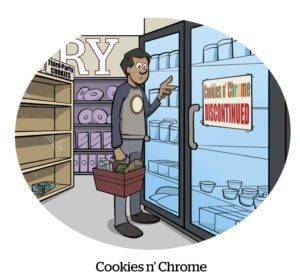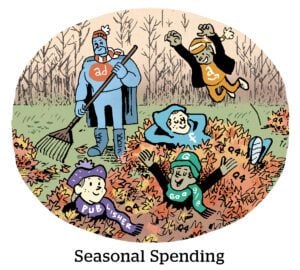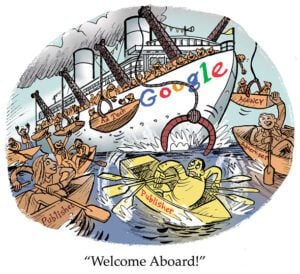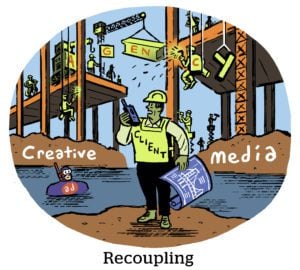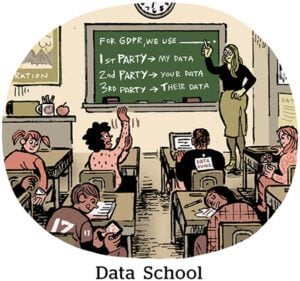Just because the industry is dealing with signal loss doesn’t mean media planners aren’t still being deluged by billions of data points across the web.
To help manpower-strapped agencies free up time to devote to higher-order campaign-planning tasks rather than data management, WPP-owned GroupM has struck a new partnership with Google.
On Wednesday, GroupM announced that Choreograph, its campaign planning and data insights platform, is now integrated with Google’s AudienceInsightsService API.
The integration allows Choreograph to compile data derived from Google – including signals from Search, YouTube and Google Analytics – in one interface, removing the need for media planners to gather this data from various sources, said Stephan Bruneau, product leader for insights and planning at GroupM.
The collaboration also makes it easier for media planners to decide which Google audiences to target by providing machine-learning-driven recommendations.
And it makes GroupM less reliant on third-party cookies for audience matching, since the audience data is provided directly from Google.
One interface
GroupM’s Choreograph interface works like this: A media planner submits a query describing a campaign’s target audience, similar to a generative AI prompt.
The planner selects from a list of filters, including demographic factors, such as age and gender, and/or topics the target audience might be interested in. The platform then spits out suggestions for appropriate audiences to target.
Now, Google-provided data is included in this decisioning algorithm.
If, for example, an advertiser wants to reach people interested in vegan food, Choreograph might recommend audiences that follow or regularly watch vegan cooking channels on YouTube or that have searched for vegan recipes on Google.
Media planners also have an option to narrow the audience down according to other parameters, such as carving out a subset of males who are interested in both vegan food and fitness devices.
Via the integration, Choreograph can score potential audiences based on how closely they correspond to the desired target.
Google, meanwhile, provides data on the number of available impressions by audience, and planners can compare audiences to determine which combination of parameters would yield the best reach.
The integration will allow GroupM media planners to activate Google-provided data directly within Google’s media ecosystem, including ads on YouTube and across Google’s display network.
But planners will also be able to use insights derived from the data to inform campaign strategy on non-Google platforms, Bruneau said. For example, if a certain audience worked well for a YouTube campaign, it might also work for a TikTok campaign.
While the solution uses a variety of interest-based signals provided by Google, such as search data and the YouTube channels a user subscribes to, it’s unclear if it also includes performance data, such as purchase history or information on how likely an audience is to click an ad for a specific type of product. Google did not respond to a request to clarify this.
It’s also worth noting that while the solution does enable targeting specific individuals, any user matching that involves first-party logged-in user data is done on Google’s side. GroupM has no visibility into the individual users who are included in these audiences, Bruneau said.
Pilot test
WPP piloted the Google integration through its Wavemaker agency last summer before rolling the solution out across the wider universe of GroupM agencies, including EssenceMediacom, Mindshare and mSix&Partners. The initial pilot involved testing the solution on real campaigns executed on behalf of Wavemaker clients.
Bruneau declined to get into specifics about the results of these test campaigns, but did share two positive takeaways from the pilot.
First, the integration allowed GroupM media planners to align more quickly with their clients on which audiences to target for a campaign.
Typically, this part of the planning process involves a lot of back-and-forth with clients before a final decision is made, Bruneau said. But the data signals provided by Google were so strong – and the direct integration ensured there was no fidelity lost by transferring data signals between various sources – that it was often “obvious” which audiences to target, which limited the need for debate, he said.
Second, integrating Google’s data directly made it easier to quickly identify a larger number of relevant audiences. Prior to the integration, GroupM’s teams would have to rely more on external data sources and panels to determine possible target audiences, which can be effective, Bruneau said, but is a slower process that can overlook key prospects.
Post-cookie plans
To be clear, the AudienceInsightsService API this integration relies on is not one of the Privacy Sandbox APIs Google created to replace third-party-cookie-based targeting. However, GroupM sees the collaboration as an important part of its post-cookie plans.
Once cookies are phased out, agencies will have to rely more on “data intelligence” to facilitate audience matching between media buyers and sellers, Bruneau said, which “calls for AI algorithms, collaborations and technology integrations to share data in a safe way.”
Going forward, he said, we can expect to see tighter collaborations between agencies and their platform partners to enable effective audience targeting in the absence of third-party cookies.
“I think it’s the only way,” Bruneau said. “Otherwise, we’re going to have this gap in the middle, and it’s up to data and tech to close that gap.”





